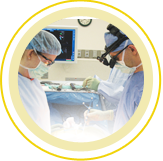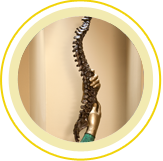Neck pain is a common complaint and, while it’s often caused by injuries and sprains with muscles, tendons and ligaments, it can also be caused by herniated discs or cervical stenosis.
Some causes of neck pain are difficult to avoid, but there are a few tips you can follow to prevent neck pain:
1. Adjust your computer screen and monitors
 Adjusting your computer screen so it’s at eye level will help prevent unnecessary neck pain. Make adjustments by using books to level out the computer or adjust your desk chair so your gaze is in the middle of the computer screen. It’s also important to take breaks everything 30 minutes to prevent your head from drifting over your shoulders.
Adjusting your computer screen so it’s at eye level will help prevent unnecessary neck pain. Make adjustments by using books to level out the computer or adjust your desk chair so your gaze is in the middle of the computer screen. It’s also important to take breaks everything 30 minutes to prevent your head from drifting over your shoulders.
2. Try to sleep on your back
The way you sleep is a very important factor when it comes to neck pain prevention. Sleeping on your back keeps your spine in line and resting comfortably. The type of pillow and size of your pillow are also important in preventing neck pain. Your pillow shouldn’t be more than four to six inches thick. Anything thicker will cause your head and neck to turn unnaturally. The best option if you suffer from neck pain is to buy a cervical pillow because they keep the neck in alignment with the spine.
3. Maintain proper posture
Standing up straight can prevent straining muscles and ligaments. Slumping and slanting your neck forward puts extra pressure on the spine.
4. Exercise your neck muscles
Doing strengthening and stretching exercises can keep your neck muscles strong. The chin tuck exercise, which is the most common strengthening exercise, involves keeping your spine against a door jamb and pulling the upper back and head back until the back of the head touches the door jamb. Hold your head against the door jam for five seconds and repeat the exercise ten times.
5. Avoid texting for long periods of time
Looking down for any reason for a long period of time can add extra stress on your neck. Try to minimize the time your’re looking on your phone and texting, and raise the phone up to eye level when you are.
6. Relieve trigger point pain
Trigger points are small knots in the muscle or fascia that can lead to pain. Two effective trigger point exercises include foam rollers and using a racquetball to massage blade trigger points yourself.
Contact the Spine & Scoliosis Specialists at 336.333.6306 or fill out our online form to find out more about preventing or treating neck pain.



